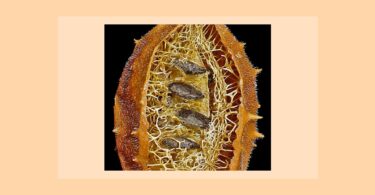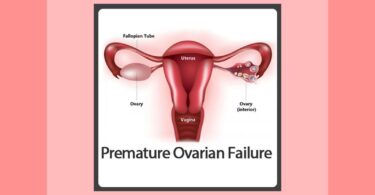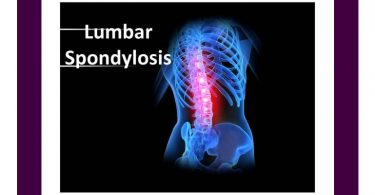Tamara G. Denisova,A,B,D,1,2 Liudmila Ivanovna Gerasimova,A,B,C,D,2 Nadezhda L. Pakhmutova,A,B,C,D,3 Seema Mahesh,E,F,4 and George VithoulkasD,E,5
Copyright © Am J Case Rep, 2018
This work is licensed under Creative Common Attribution-Non Commercial-No Derivatives 4.0 International (CC BY-NC-ND 4.0)
Abstract
Patient: Female, 39 Final Diagnosis: Vegetovascular dystonia • dysfunctional uterine bleeding – Symptoms: Bleeding per vaginum • loss of consciousness • weakness Medication: —
Clinical Procedure: Oral medication
Specialty: General and Internal Medicine
Objective:
Unusual clinical course
Background:
Obesity is one of the leading causes of morbidity and mortality globally and challenging to treat because of the multifactorial etiology and presentation. Individualized homeopathy takes into account factors that led to a patient’s health condition and hence may have a role in the treatment of obesity and related co-morbidities; co-morbidities that may arising from the same etiology may respond as a whole to homeopathy treatment.
Case Report:
A 39-year-old Russian female who developed multiple problems after severe emotional stress was treated with individualized classical homeopathic therapy. Obesity, dysfunctional uterine bleeding, and dysautonomia were pathologies that showed improvement.
Conclusions:
The response in this patient’s case, supports the need for further investigation on the relevance of individualized homeopathy in these related conditions.
MeSH Keywords: Obesity, Primary Dysautonomias
Background
The management of obesity and its associated complications has become a growing challenge globally in recent years, and it has emerged as one of the leading causes of morbidity and mortality [1–4]. Obesity has been attributed to chronic low-grade inflammation in the body which also triggers various other inflammatory states such as metabolic syndrome, depression, cardio vascular diseases, etc. The cause for obesity is not always as straight forward as an increase in energy intake. Studies have shown that alteration of the hypothalamic-pituitary-adrenal axis through emotional stress can also lead to obesity [5–7]. While lifestyle and diet corrections go a long way in making the situation better for some cases of obesity, they are not enough in many cases, especially when a patient has organic functions disturbed.
Autonomic dystonia (dysautonomia, vegeto-vascular, and vegeto-vagal dystonia) has been seldom mentioned in general medical literature but finds abundant presence in the Russian medical literature [8–11]. The condition involves sudden malfunction of the autonomic nervous system with panic attack like episodes associated with vasodilatation and loss of consciousness. Therapeutic approaches are lacking and often involve general improvement of health [9,12]. Though unclear, its etiology is considered mostly psychogenic and though it is sometimes considered a completely psychological complaint, the effect on quality of life is tremendous and real [9,12,13]. It is interesting that there exists a close link between the autonomic nervous system functioning and body mass index [14,15], as was relevant in this patient case report.
This case report, to the best of our knowledge, is the first of its kind with the specific association of obesity, hypertension, hormonal imbalances, dysfunctional uterine bleeding, and dysautonomia treated with homeopathy. The case does have a selection bias as the patient opted for homeopathy herself.
Case Report
The patient, a 39-year-old Russian female complained of copious bloody vaginal discharge of 10 days duration; copious vaginal bleeding started after a 26-day delay in her menstrual cycle. In general, her menstrual cycles were very irregular. She also experienced general weakness, recurrent bouts of dizziness, and sickness with profuse perspiration and the loss of consciousness of one-year duration. At presentation, she weighed 106 kg, her blood pressure was 215/126 mm Hg. Her mucosae were pale in appearance and her thyroid gland was slightly enlarged; she was considered to be in an iodine deficiency endemic zone.
On gynecological examination, the uterine body appeared slightly enlarged and was painful on displacement; there was copious bloody discharge. An abdomino-pelvic ultrasound revealed moderate fatty liver infiltration, moderate common bile duct dilation, moderate wall thickening and heterogeneity of the gallbladder, moderate lipomatosis of the pancreas; the uterus was moderately enlarged, ovaries multifollicular with the right ovary enlarged, with a 25×16 mm cyst; there was a small amount of fluid in the pouch of Douglas.
Blood tests showed an increased prolactin, thyroid stimulating hormone, luteinizing hormone, and follicle stimulating hormone level. She had mild dyslipidemia, but other biochemical values were normal (Table 1). The patient’s diagnosis was dysfunctional uterine bleeding with obesity, hypertension, and vegeto-vascular dystonia (autonomic dystonia) with sympatho-adrenal crises.
Table 1.
Health parameters before and after treatment.
| Test | Status before starting treatment | Status after 12.5 months of treatment |
| Follicle Stimulating Hormone | 10.6 mU/mL (normal: up to 9.9 mU/mL) | 7.6 mU/mL |
| Luteinizing Hormone | 19.6 mU/mL (normal: up to 15 mU/mL) | 7.8 mU/mL |
| T4 | 75 nmol/L (normal: 55–137 nmol/L) | |
| Thyroid Stimulating Hormone | 5.6 mIU/L (normal: 0.4–4.2 mIU/L) | 3.4 mIU/L |
| Antibodies to Thyroperoxidase | 3.6 U/mL (normal: up to 5.6 U/mL) | |
| Testosterone | 2.5 ng/mL (normal: 0.45–3.17 ng/mL) | |
| Progesterone | 3.1 nmol/L (normal: 2.3 nmol/L) | |
| Estradiol | 0.43 nmol/L (normal: 2.3 nmol/L) | |
| Serum Prolactin | 1167 mIU/L (normal: 450–650 mIU/L) | 578 mIU/L |
| Blood pressure (24 hours average) | 215/126 mm Hg | 135/93 mm Hg |
| Serum creatinine | 0.86 mg/dL (N – 0.4–1.1 mg/dL) | |
| Blood urea | 4.2 mmol/L (N – 2.5–7.1 mmol/L) | |
| Urinalysis | Light yellow color; Specific gravity – 1,014 g/L, Reaction (pH) is acidic; Protein – nil; Glucose – nil; Bile pigments – absent; Ketone bodies are absent; Hemoglobin is absent. |
|
| Microscopy of urine | 2–4 leukocytes per field of view Erythrocytes – 1–3 in per field of view Epithelial cells – 3–4 per field of view Casts – 0 per field of view |
|
| Liver function | ALS – 0.43 mmol/L (N – 0.1–0.68 mmol/L); AST – 0.27 mmol/L (N – 0, 1–0.45 mmol/L); SCHF – 2.1 mmol/L (N1–3 mmol/L); GGT – 2.4 mmol/L (N-0.6–3.96 mmol/L); Total bilirubin – 16.3 (N-8.6–20.5 mmol); Total protein – 72.8 hl (N- 65–85 hl); Albumins – 47.2 hl (N-40–50 hl); Globulins – 26.4 hl (N20–30 hl). |
|
| Lipid profile | Total cholesterol – 6. 81 mmol/L (N – 3.10–5.16 mmol/L) HDL – 1.24 mmol/L (N 1.0–2.07 mmol/L) LDL – 4.28 mmol/L (N 1.71–3.40 mmol/L) VLDL – 1.29 mmol/L (N 0.26–1.04 mmol/L) Triglycerides – 1.34 mmol/L (N 0.45–1.60 mmol/L) Atherogenic coefficient – 4.5 (N 1.5–3) |
Total cholesterol – 4.73 mmol/L HDL – 1.67 mmol/L LDL – 3.18 mmol/L VLDL – 0.56 mmol/L Triglycerides – 1.13 mmol/L Atherogenic coefficient – 1.8 |
| Hemoglobin | 86.4 g/L (N 120–140 g/L) | 126.7 g/L |
| Pelvic ultrasound | The uterus was moderately enlarged, ovaries multifollicular with the right ovary enlarged – with a 25×16 mm cyst; there was small amount of fluid in the Pouch of Douglas | Small pelvis shows no obvious pathology; the endometrium corresponds to the phase of the menstrual cycle. |
| Body weight | 106 kg | 82 kg |
Past history revealed that in 2008, she developed hormonal imbalances (increased estrogen, follicle stimulating hormone, and prolactin levels); she also underwent endometrial polyp extraction. In 2009, she developed enlargement of the thyroid gland. In 2011, she had cholelithiasis and in 2012 she had urolithiasis. In 2013, she delivered her second child; she developed blood pressure changes, chest pains, palpitations, and loss of consciousness. Her first menstruation was at the age of 11 years, initially copious with the duration of 5 to 6 days. She had 2 childbirths, no abortions. The character of her menstruation changed after her first childbirth delivery; it became irregular and abundant with a duration of 7 to 8 days. Her body weight was 68 kg, she gained 28 kg during the pregnancies, and weighed 106 kg, she did not lose any of the weight gain. Her last pelvic examination, which was a few months prior to the present examination, did not reveal any pathology. The pelvic ultrasonography detected no pathology at that time.
Her mother died of stomach cancer; there was also prostate cancer and thyroid disorders in her family history. The patient related the beginning of her ill health to the time her mother’s death in 2007. She reported missing her mother very much; she was very attached and has dreams of her mother. Her first reported hormonal changes appeared in 2008 and her health became worse from there onwards. In 2013, she delivered her second child and at the end of that lactation period, she started having irregular and heavy menses.
She eventually consulted an endocrinologist and a neurologist. Such measures as curettage of uterine cavity, prescription of uterotonic drugs, and antibacterial therapy were planned to stop the bleeding. She was also scheduled to start a weight loss program. The neurologist, however, asked her to see a professional homeopath to see if an alternative solution was available.
The patient sought homeopathic consultation on October 10, 2016. She did not take any other medication and continued the same diet and routine as she had been practicing. After taking into consideration her present condition along with the prolonged grief that the patient was experiencing from her mother’s demise, which probably had led to her complicated health situation, the homeopathic remedy Natrum muriaticum 15C was chosen. The follow-up and subsequent prescriptions are shown in Table 2.
Table 2.
Follow-up of the patient case.
| Date | Symptoms | Prescription |
| 10/10/2016 | Copious vaginal bleeding; irregular menstrual cycles; prolonged bleeding weight gain; high blood pressure with fluctuations; episodes of sudden onset of profuse sweating and loss of consciousness; general weakness and dizziness; palpitations; distracted, unable to concentrate before menses; grief over her mother’s death 9 years ago, not recovered yet | Natrum muriaticum 15C one dose alternate days. Later increased to 21C and 30C as required |
| 19/12/2016 | Patients mood better Symptoms of pre-menstrual syndrome better appearance of a boil with pus discharge on the forehead and right thigh which disappeared on its own Sleep better |
Natrum muriaticum 60C |
| 27/03/2017 | Weight loss – 4 kg Had stress at work which caused an increase in blood pressure and exhaustion, but the patient was able to cope with it without any medicine. There was a change in the symptom indication for homeopathic remedy |
Ignatia 200C |
| 30/10/2017 | Patient feels better on all levels, i.e., mental, emotional, and physical. Her blood pressure is normal, menses regular and painless. No PMS. Sleep is refreshing and good. No dizziness, loss of consciousness or palpitations; no profuse sweating. Body weight 82 kg |
Nil |
The last follow-up was October 30, 2017, and at 12.5 months after starting the homeopathic remedy, and the patient reported that her quality of life had greatly improved, with her menstrual cycles were now regular. The sympatho-adrenal crises were gone within 5 months of beginning the treatment; she weighed 82 kg at the last follow-up. Her prolactin level had returned to normal and her pelvic ultrasound scan was normal as well (Table 1).
Discussion
It has been suggested that a patient’s immune system has a major role to play in the onset and maintenance of obesity and its complications [2]. This means that if deep and lasting changes for the better are to occur, then therapy must not only help decrease weight but also change the immune status of the patient to a healthier one. This may be seen as changes in associated complaints.
Classical homeopathy regards an individual’s immunological make up and medical history along with familial tendencies in order to determine the stress that triggered the chronic inflammatory state. With this in consideration the therapeutic approach is tailored to that particular individual and the result is resolution of the inflammatory state by the person’s own immune system [16,17] seen as overall betterment of the patient and not just one of the pathological conditions. Such general improvement in the co morbidities along with betterment in the main severe pathology by classical homeopathic therapy has been recorded before now [18–21]. This is evidenced in the present case as well. The mechanism of action of the biologically active potentized remedies is not quite known. So far there are some hypotheses as may be seen in the Science of Homeopathy [22].
In our patient case, the autonomic nervous system dysfunction seemed to be central to all of the patient’s suffering. The severe stress experienced by the patient seems to have upset the sympatho-vagal balance which resulted in obesity, hormonal imbalance, hypertension, and vegeto-vascular dystonia. The initial disruption of our patient’s health was caused by her severe grief. The remedies selected were those known to help bring about balance in conditions that result from grief and bereavement [23]. The specific way in which the pathology develops and symptoms appear in response to deep seated grief has been recorded for this particular remedy provings and they have been of service where people have suffered from very long-standing depression and its co-morbidities [24]. The repetition of low potencies therapies such as 15C must be made over a long period of time in order to see positive changes, as was seen in this case where the patient’s autonomic dys-function responded within 5 months of the start of treatment, and the patient’s hormonal state improved. Her weight reduced from 106 kg to 82 kg and her lipid levels improved even in the absence of a special diet or regimen (Table 1) and her menses regularized.
There is question regarding the mechanism of the applied remedy’s action, and the evidence is not strong enough to clearly support results for this homeopathic remedy. However, such overall improvement from a therapy, especially without changes in any other parameter that may have caused the improvements, is encouraging and suggests a need to further investigation into whether this case represents an exception or a rule. Controlled randomized trials are needed to establish the relevance of classical homeopathy in obesity and its co-morbidities and in autonomic dystonia as well.
Conclusions
This case of a female with dysfunctional uterine bleeding, obesity, and vegeto-vascular dystonia showed a benefit from classical homeopathy. It suggests the need to further evaluate, through larger studies, if any or all of these diagnoses may individually or collectively be amenable to classical homeopathic therapy.
References:
- O’Neill S, O’Driscoll L. Metabolic syndrome: A closer look at the growing epidemic and its associated pathologies. Obes Rev. 2014;16(1):1–12. [PubMed] [Google Scholar]
- Saltiel A, Olefsky J. Inflammatory mechanisms linking obesity and metabolic disease. J Clin Invest. 2017;127(1):1–4. [PMC free article] [PubMed] [Google Scholar]
- Rethorst C, Bernstein I, Trivedi M. Inflammation, obesity, and metabolic syndrome in depression: analysis of the 2009–2010 National Health and Nutrition Examination Survey (NHANES). J Clin Psychiatry. 2014:e1428–32. [PMC free article] [PubMed] [Google Scholar]
- Furukawa S, Fujita T, Shimabukuro M, et al. Increased oxidative stress in obesity and its impact on metabolic syndrome. J Clin Invest. 2004;114(12):1752–61. [PMC free article] [PubMed] [Google Scholar]
- Babic R, Maslov B, Babic D, Vasilij I. The prevalence of metabolic syndrome in patient with posttraumatic stress disorder. Psychiatr Danub. 2013;25(Suppl. 1):45–50. [PubMed] [Google Scholar]
- Bjorntorp P. Do stress reactions cause abdominal obesity and comorbidities? Obes Rev. 2001;2(2):73–86. [PubMed] [Google Scholar]
- Vancampfort D, Correll C, Wampers M, et al. Metabolic syndrome and metabolic abnormalities in patients with major depressive disorder: A meta-analysis of prevalences and moderating variables. Psychol Med. 2013;44(10):2017–28. [PubMed] [Google Scholar]
- Bulgakov M, Avtandilov A, Milovanova O. The role of prolonged stress and the functional state of the endothelium in the development of autonomic dystonia syndrome. Neuroscience and Behavioral Physiology. 2017;47(7):791–94. [Google Scholar]
- Lobzin V, Poliakova L, Shiman A, Zavodnik A. [Treatment of autonomic vascular dystonia by combined physiotherapy methods] Vrach Delo. 1989;3:2–23. [in Russian] [PubMed] [Google Scholar]
- Vein A, Iakhno N, Kulikovski V, Mazhukin V. [Characterization of the status of nonspecific brain systems in cerebral autonomic-vascular crises and neurogenic syncope] Zh Nevropatol Psikhiatr Im S S Korsakova. 1981;81(7):988–94. [in Russian] [PubMed] [Google Scholar]
- Zotov D, Isakov V. The features of hemodynamic support of exercise stress in patients with neurocirculatory dystonia. Pediatrician (St Petersburg) 2018;9(1):49–53. [Google Scholar]
- Sympathoadrenal crisis: symptoms, treatment. Medicine. 2018 Available from: http://medicine-en.info/neurology/sympathoadrenal-crisis-symptoms-treatment.html. [Google Scholar]
- Isaev D, Efremov K. [Psychogenic factors involved in the formation of vegetovascular dystonia of a hypertonic type in children] Zh Nevropatol Psikhiatr Im S S Korsakova. 1983;83(10):1548–52. [in Russian] [PubMed] [Google Scholar]
- Peterson H, Rothschild M, Weinberg C, et al. Body fat and the activity of the autonomic nervous system. N Engl J Med. 1988;318(17):1077–83. [PubMed] [Google Scholar]
- Molfino A, Fiorentini A, Tubani L, et al. Body mass index is related to autonomic nervous system activity as measured by heart rate variability. Eur J Clin Nutr. 2009;63(10):1263–65. [PubMed] [Google Scholar]
- Vithoulkas G, Carlino S. The “continuum” of a unified theory of diseases. Med Sci Monit. 2010;16(2):SR7–15. [PubMed] [Google Scholar]
- Vithoulkas G. Levels of health. Athens: International Academy of Classical Homeopathy; 2017. [Google Scholar]
- Mahesh S, Mallappa M, Vithoulkas G. Embryonal carcinoma with immature teratoma: A homeopathic case report. Complement Med Res. 2018;25(2):117–21. [PubMed] [Google Scholar]
- Mahesh S, Mallappa M, Vithoulkas G. Gangrene: Five case studies of gangrene, preventing amputation through Homoeopathic therapy. Indian Journal of Research in Homoeopathy. 2015;9(2):114. [Google Scholar]
- Mahesh S, Mallappa M, Tsintzas D, Vithoulkas G. Homeopathic treatment of vitiligo: A report of fourteen cases. Am J Case Rep. 2017;18:1276–83. [PMC free article] [PubMed] [Google Scholar]
- Tenzera L, Djindjic B, Mihajlovic-Elez O, et al. Improvements in long standing cardiac pathologies by individualized homeopathic remedies: A case series. SAGE Open Med Case Rep. 2018;6 2050313X1879281. [PMC free article] [PubMed] [Google Scholar]
- Vithoulkas G, Tiller W. The science of homeopathy. Athens: International Academy of Classical Homeopathy; 2009. [Google Scholar]
- Oberai P, Balachandran I, Janardhanan Nair K, et al. Homoeopathic management in depressive episodes: A prospective, unicentric, non-comparative, open-label observational study. Indian Journal of Research in Homoeopathy. 2013;7(3):116. [Google Scholar]
- Kent J. Lectures on homœopathic materia medica. New Delhi: Jain Pub Co; 2012. [Google Scholar]
Articles from The American Journal of Case Reports are provided here courtesy of International Scientific Information, Inc.






